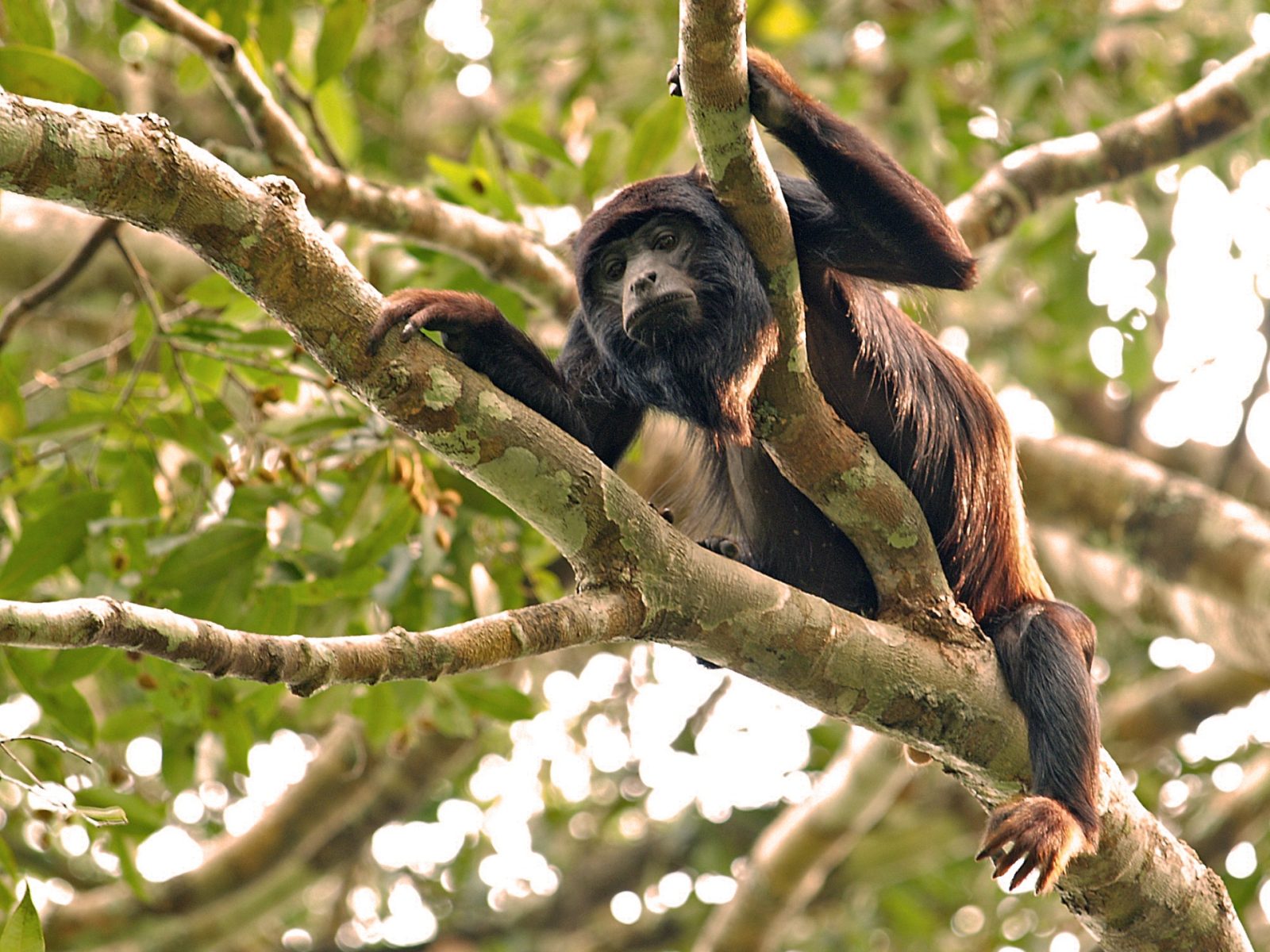
Spix red handed howler
 The species was previously considered a subspecies of the red-handed howler, but it is now treated as a separate species.
The species was previously considered a subspecies of the red-handed howler, but it is now treated as a separate species.
Spix’s red-handed howler has a similar appearance to the red-handed howler, but it has a yellowish-brown to reddish-brown back. Males weigh about 7.2 kg, females about 5.5 kg.
They are only found in central Brazil, specifically along the south-eastern Amazon River in the State of Pará (see the map). Spix’s red-handed howler mainly preferlowland forests separated by dry areas as well as forests affected by seasonal flooding. The primary food source of this species is ripe and unripe fruit; it has the highest reliance on this food source of all species in this genus. A variety of species provide fruit year-round, but leaves supplement the sugars of the fruits with protein in their diets. When these food sources are limited, the howlers also supplement their diets with more mature leaves, flowers, woody plant matter, and sometimes fungi to possibly help digest the increased plant matter.
Spix’s red-handed howlers generally move in groups of 4-11 individuals, and have relatively small home ranges, 5-45 ha in size.
Spix’s red-handed howler is currently listed as a Vulnerable species by the International Union for Conservation of Nature, based on a population decrease of over 30% over the past 3 generations, mainly due to habitat loss.
The main threat to the species is habitat destruction by logging as well as land conversion for cattle ranching and soy plantations. Habitat fragmentation occurs through the presence of two major highways – the Cuiabá-Santarém highway runs through its range in a north-south direction and the Trans-amazonian Highway in an east-west direction. These roadways also pose the risk of fatality by vehicle collision. The habitat of the species is also heavily hunted (both commercially and for subsistence).
This website was built to help people do wild travel, and thereby support the wild species that they might see in the places they visit. Any links that might help see this species will appear below.










